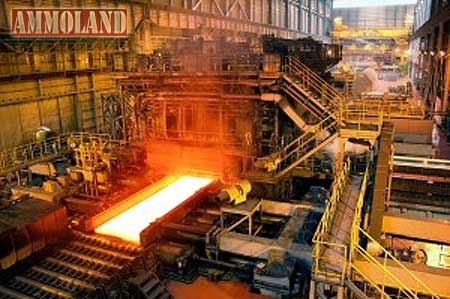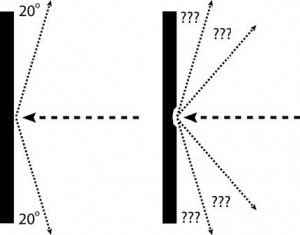

Provo, Utah –-(Ammoland.com)- With more and more companies and individuals manufacturing steel targets, the water has become increasingly muddy where accurate information is concerned.
With technical data provided by the American Iron and Steel Institute in Washington D.C., this report is designed to cut through the recent hype and establish a basis of fact for accurate evaluation and comparison.
What Is Steel?
Steel is an alloy metal composed of iron and varying amounts of carbon and/or other elements such as chromium, nickel, tungsten, manganese, and so on. Steel with specific properties and characteristics is created by adjusting the overall chemical composition or by altering the various production processes such as rolling, finishing, and heat treatment. Because each of these factors can be modified, there is potentially no limit to the number of different steel recipes that can be created. Currently, there are over 3,000 catalogued grades or chemical compositions of steel available. Steel can utilize a wide variety of alloying elements and heat treatments to develop the most desirable combination of properties.
Steel Hardness and Quality
For steel targets to be functional and safe, they should be made of high quality through hardened steel that has a Brinell hardness number (BHN) of at least 500. The steel must also provide sufficient strength, toughness, and impact resistance. The Brinell hardness test depends upon the resistance offered to the penetration of a carbide steel ball (1.6 mm diameter) when subjected to a weight of 12.6 kg. The resulting hardness value is computed as the ratio of the applied load to the area of the indentation produced. This test is accepted as a worldwide standard for measuring the hardness of steel.
Truth – There are 2 Factors that Affect the Hardness of Steel
The first is the amount of carbon and other alloying elements in its chemical composition, and the second is the manner in which the heating and cooling of the steel is manipulated. These factors are determined at the most fundamental level, and affect the finished steel as a whole.
[Left] Hard steel with a flat surface will create a predictable splatter pattern. [Right] Soft steel with an uneven surface will cause unpredictable and unsafe ricochet and splatter.
The hardness of the steel is critical because only a smooth surface will generate predictable splatter patterns. Steel that is not sufficiently hard can develop pits, craters, dimples, and other hazardous deformations. When a bullet hits one of these deformations, it is impossible to predict where the splatter will go, thereby creating an unacceptable
training environment.
There are many steel mills located around the world, but only a select few are able to produce steel that is hard enough and of sufficient quality to be safely used for steel targets. HARDOX / SSAB, Bethlehem-Lucas, Oregon Steel Mills, and NKK are major producers of such steel. Each of these companies may have minor proprietary differences in their production methods, but they all must make sheets of hard steel in essentially the same way. Nevertheless, some suppliers of targets and shooting range equipment attempt to muddy the water and create perceived differences in steel quality where none exist. One particularly misleading claim refers to a certain company’s use of through hardened steel as opposed to merely surface hardened AR500 steel allegedly used by everyone else. We state the following with all possible force:
1. Action Target uses only high quality, through hardened steel with a Brinell hardness rating of at least 500, and we use it in every one of our ballistic steel products.
2. Action Target can also provide through hardened steel targets and other steel products with certified Brinell hardness ratings of 550 and even 600.
3. Despite the inaccurate claims, AR500 steel is NOT surface hardened. It is through hardened. Witness the quotes listed below from steel suppliers around the country.
Chapel Steel – AR500 is a quenched & tempered, through hardened, wear-resistant grade of abrasion resistant steel plate used for severe impact. (SOURCE: https://www.chapelsteel.com/ar500-ar500f.html)
Heflin Steel – Heflin REM 500 abrasion resistant plate is a premium grade wear plate, ideal for extreme abrasion coupled with resistance to impact. REM 500 plate is through hardened up to a 3″ thickness for maximum hardness and abrasion resistance.
Benco Steel – AR500 is a through hardened steel with high hardness for use where there is severe impact and abrasion.
(These companies are steel suppliers, not manufacturers or producers. They buy steel from the actual manufacturers like HARDOX / SSAB, and then re-sell it to their own customers.)
4. Any statements contrary to those above are simply untrue.
Be careful not to get caught up in the “more is better” mindset. Just because a Brinell hardness number (BHN) of 500 is good, it doesn’t mean a rating of 700 is better. While you must use steel that is hard enough for the task, going overboard only impacts your checkbook and not the product durability. For example, ballistic tests have shown that the performance difference between steel with a 500 BHN and steel with a 535 BHN is so small that you can’t tell the difference with a bullet but only with a gauge. Also be aware that you can actually use steel that is too hard and too brittle for ballistic training purposes.
About Action Targets:
Action Target is a privately owned business headquartered about 40 miles south of Salt Lake City in Provo, Utah. For the last 20 plus years, Action Target has been the dominant force in shooting range equipment design and manufacturing for law enforcement, military, and commercial ranges around the world. We are proud of our commitment to deliver advanced firearms training products that help prepare our men and women in uniform for the heroic job of defending our safety and our freedom. Visit: www.actiontarget.com


Another consideration is distance tot the target. If you are within 10 yards, I would have greater concern. If the gong is 50, 75, 100 yards out, does it matter where the splatter goes??? Just ask’n
Frangible ammunition is also available for use against steel targets. The bullets are made of a sintered metal that disintegrates (turns to powder, actually) when it hits a steel target. Therefore, the targets don’t need to be tough enough for real bullets, as long as just the specialized ammo is used. Some training facilities (where their targets are subject to a large number of impacts) demand that their students bring only this kind of frangible ammunition with them to their classes. (This type of ammo is not to be confused with frangible ammo that is inteded to break into pieces… Read more »
Does it really matter so much? A stell gong is usually free hanging and moves some when hit. Wouldn’t this tend to deflect splatter generally downward? Would there not also be less splatter since free hanging movable gongs are not locked rigidly in place?
Do not forget Nucor Steel we also produce superior quench and temper product
NucorNation baby!!! Which one of our plants produces this material? I am with ABC Atlantic and have been wondering if we made this. Please advise, thanks!!!
Sorry but I have been disappointed in Nucor’s AR500 plate. I have shot different heats and they have not held up as well as two other mills I have shot. Pistols of course do nothing, but I’m talking craters at 100 yards from 223 and 556 while only leaving a small dimple in the plates from the other mills. Yes these were from the same rifle and the plates mounted loose at a downward angle.